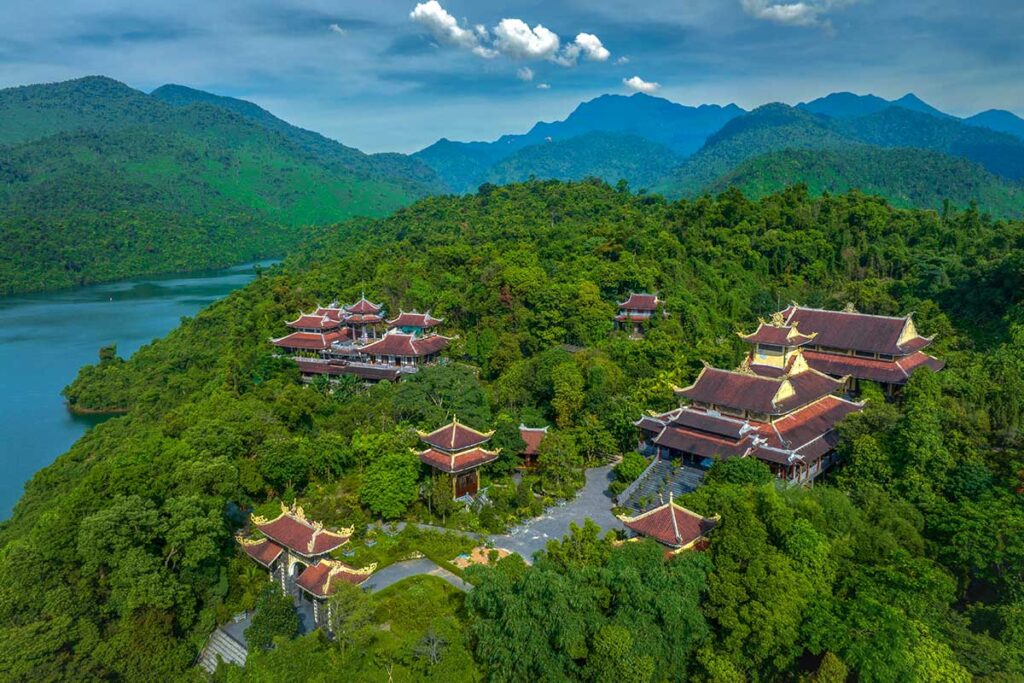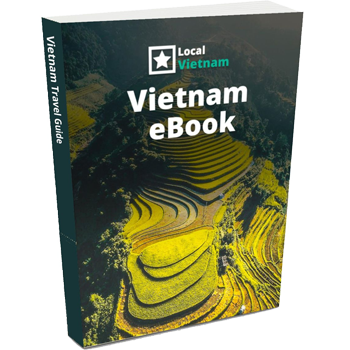History & background
Truc Lam Bach Ma Zen Monastery was founded in 2006 by Venerable Master Thuong Thanh Ha Tu, and holds the distinction of being the first Truc Lam Zen monastery in central Vietnam. It belongs to the Truc Lam Yen Tu Zen sect, a Vietnamese school of Buddhism established in the 13th century by King Tran Nhan Tong, who gave up the throne to pursue a monastic life. This tradition focuses on practicing mindfulness in everyday life, blending spiritual insight with grounded simplicity.
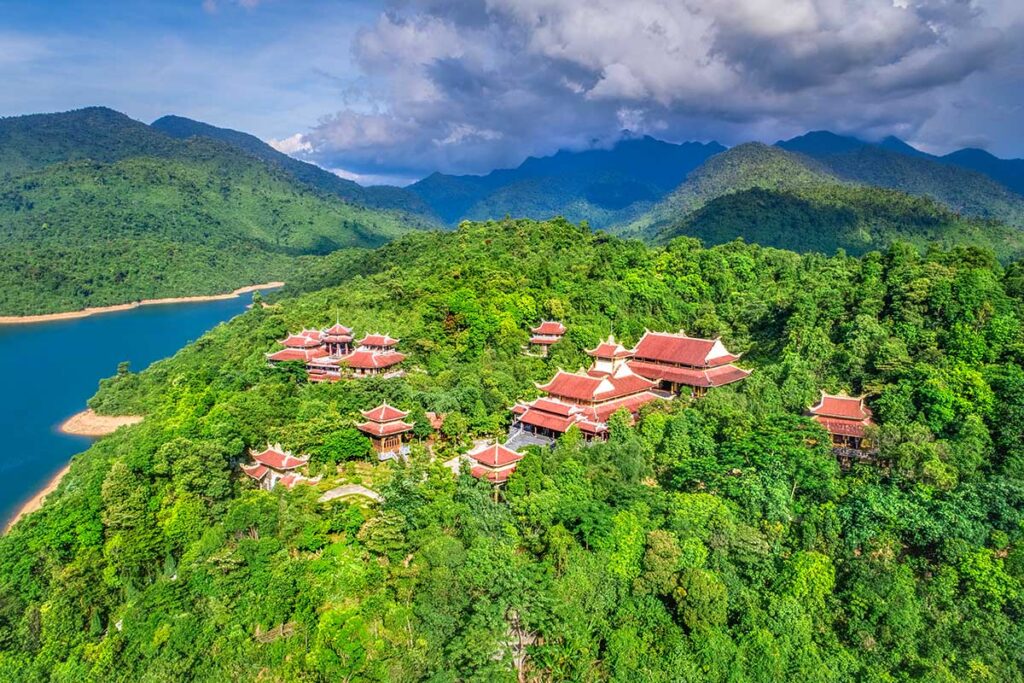
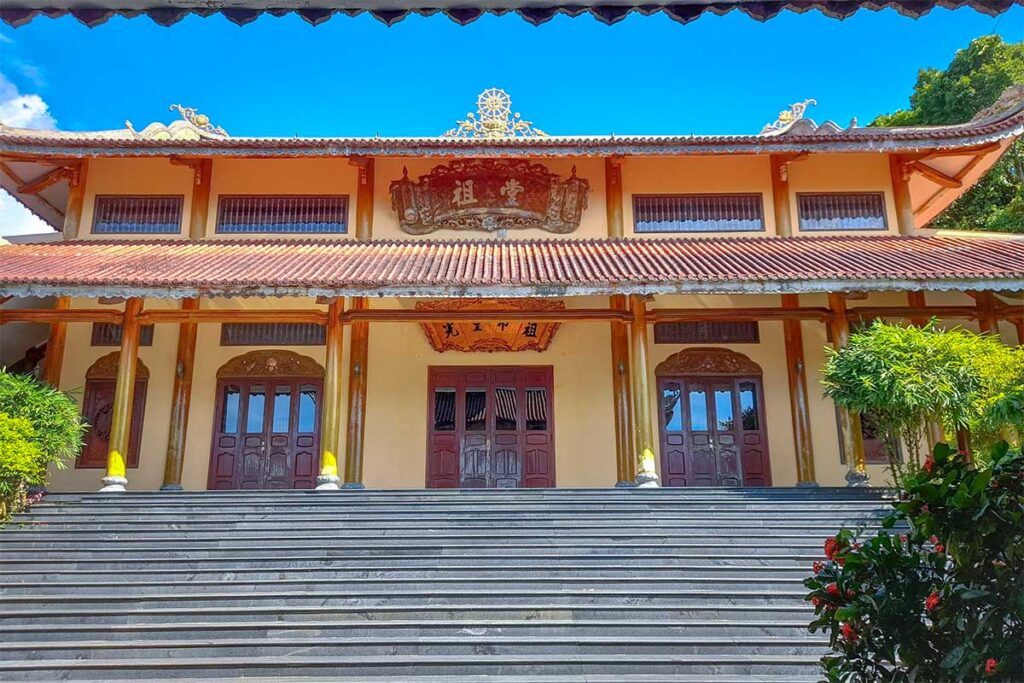
The monastery is perched on Linh Son Mountain, in the middle of Truoi Lake, surrounded by misty hills and dense forest. To reach it, you take a short boat ride across the lake and climb 172 stone steps—a quiet approach that already sets the tone for the peaceful experience ahead. With its serene mountain setting and views of the shimmering lake below, many visitors describe the place as feeling like a fairyland hidden in the clouds.
Highlights & architecture of Truc Lam Bach Ma Zen Monastery
Truc Lam Bach Ma Zen Monastery isn’t large, but it’s full of thoughtful design, peaceful views, and meaningful details. From the boat ride across Truoi Lake to the climb up the stone steps and the quiet courtyards, each part of the visit offers a small glimpse into Vietnamese Buddhist tradition and mountain life. Here are the main highlights to look out for.
1. The boat ride across Truoi Lake

To reach the monastery, you’ll first take a short boat ride across Truoi Lake, which sets the tone for the entire visit. The ride takes about 10–15 minutes, and while the boats are motor-powered and not exactly quiet, the lake itself is still peaceful.
- Cost: Around 45,000 VND per person, or 225,000 VND per boat if you don’t want to wait for others.
- Tickets are sold at the pier, where you’ll also find basic snacks, drinks, and public restrooms.
2. The 172 stone steps to the entrance
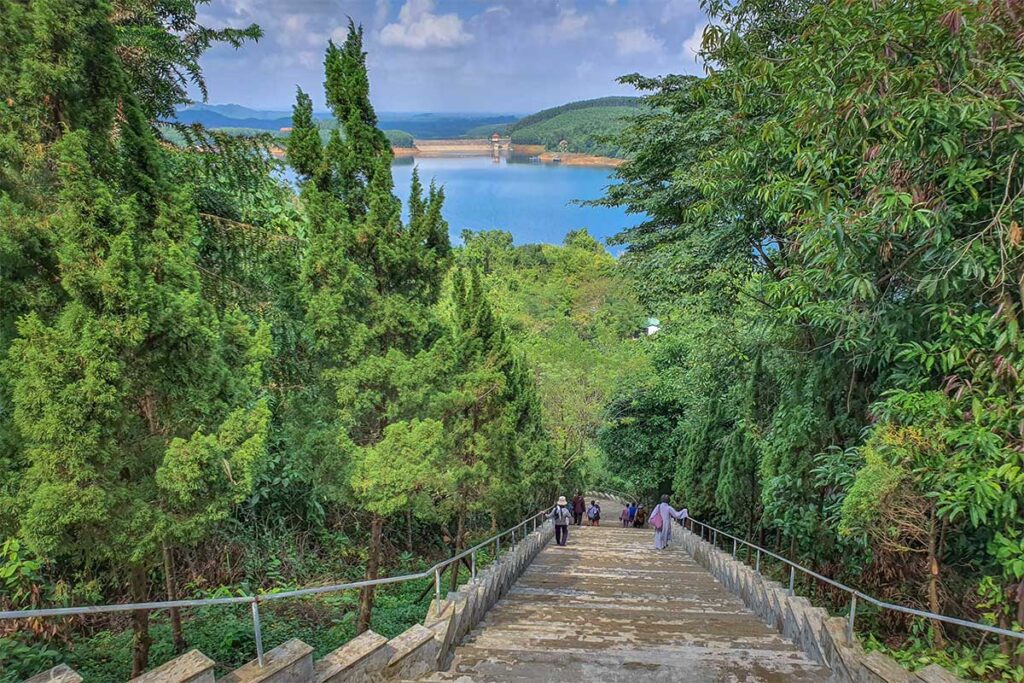
After the boat docks, a stone staircase with 172 steps leads you up the hill to the monastery’s three-entrance gate. It’s a modest climb, but worth noting if you’re visiting with small children or limited mobility. The walk is short, and the surroundings are clean and well-kept, with another restroom available at the top.
3. The Three-Entrance Gate
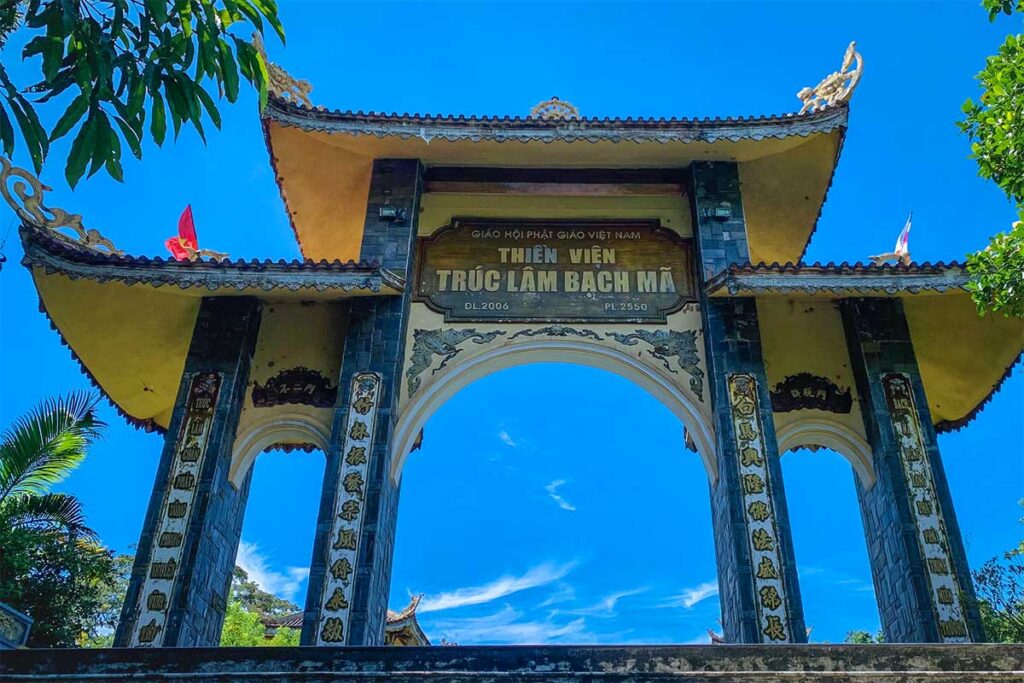
At the top of the steps, you’ll pass through the main gate, which follows traditional Buddhist design. The central entrance was historically reserved for kings or honored guests, while the side gates were meant for officials. It’s a subtle but meaningful symbol of respect and hierarchy in Vietnamese temple culture.
4. The outer courtyard and main worship hall
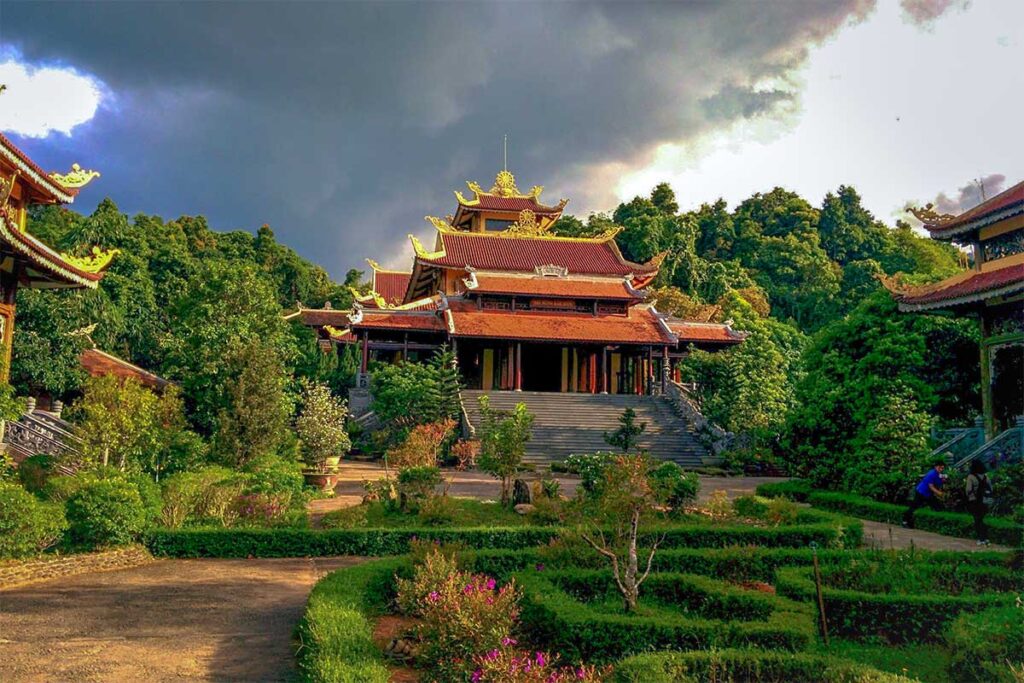
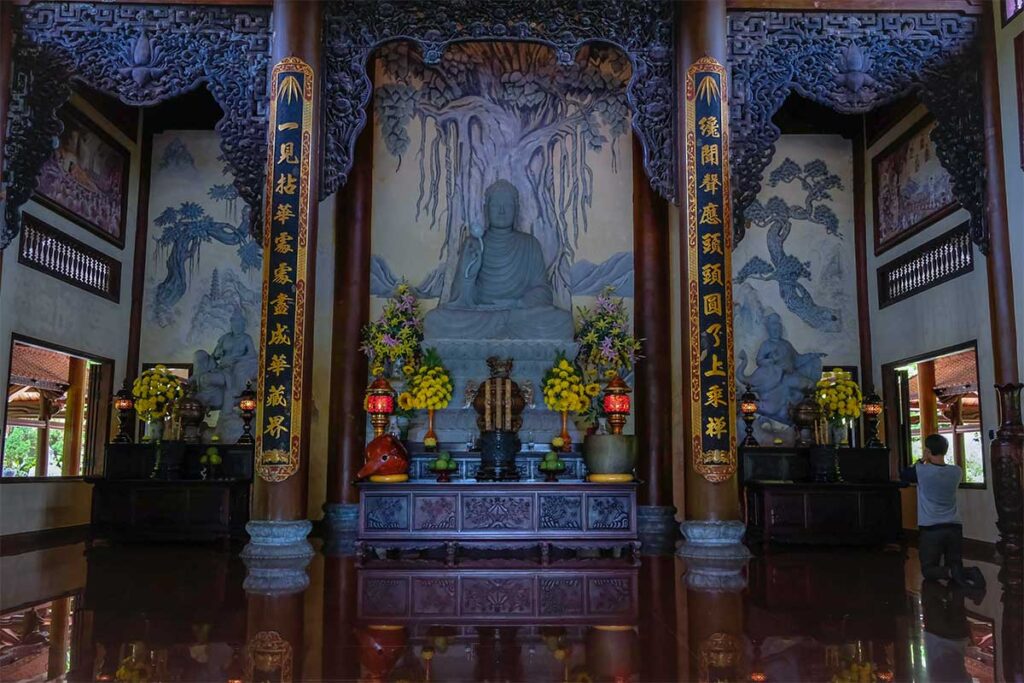
Once inside, you’ll enter the outer courtyard and see the main hall, where a statue of the Buddha sits beneath a symbolic Bodhi tree.
- You are welcome to walk around freely, but remember to remove your shoes before entering prayer halls or sacred spaces.
- The complex is divided into three main areas: the outer grounds, the monks’ quarters, and the nuns’ quarters.
5. The stone Buddha on the hill
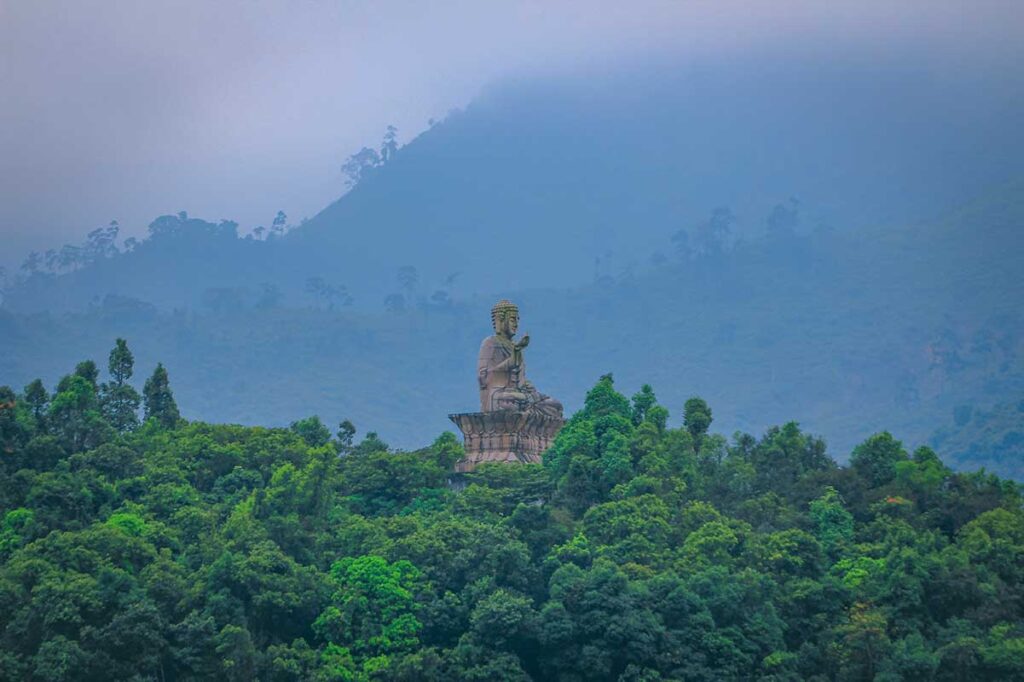
One of the most striking features is the 24-meter-tall stone Buddha statue, located on a hill facing the monastery. While the path to the statue isn’t always marked, local guides or boat operators can sometimes arrange a visit if you’re interested. The statue weighs over 1,500 tons and is beautifully placed in the middle of forested hills, offering a more secluded and spiritual viewpoint.
6. Architectural style and atmosphere
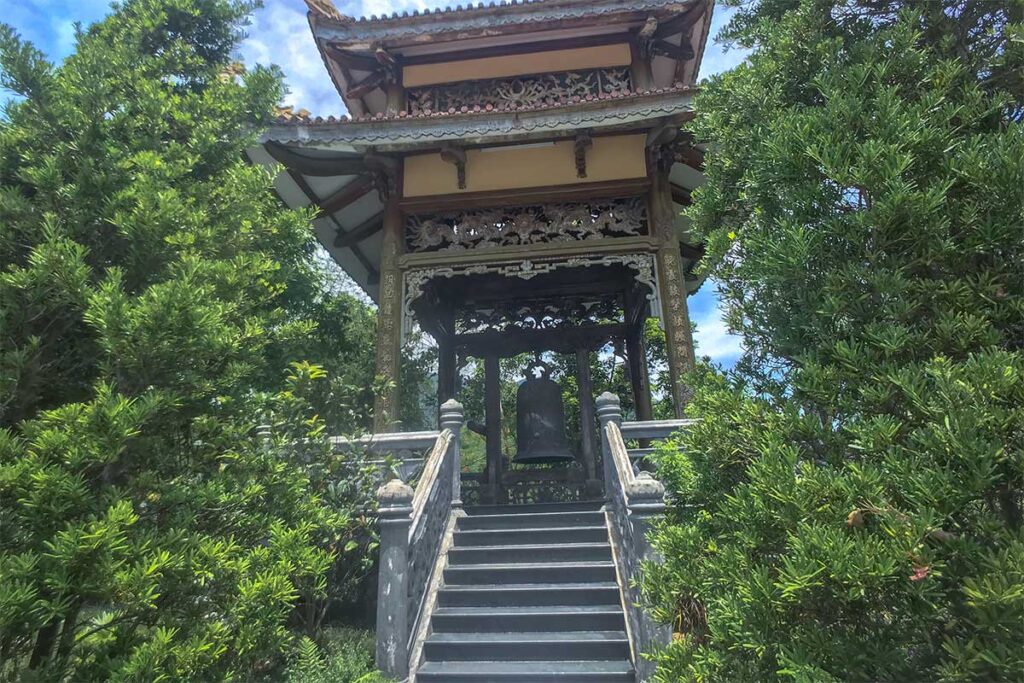

The entire complex is built with simple yet elegant architecture, blending traditional Vietnamese Buddhist design with the natural surroundings. You’ll see curved pagoda roofs, a two-story bell tower with eight curved eaves, and quiet pathways that invite slow exploration. It’s not a place for dramatic sightseeing—but if you appreciate calm, structure, and spiritual detail, it’s a deeply rewarding stop.
Opening hours and entrance fees
Opening hours
The monastery is open daily from 6:00 AM to 5:00 PM.
Entrance fee
Admission to the monastery grounds is free—you don’t need to pay to enter the temple area itself.
Boat Fee (Required to reach the monastery)
To cross Truoi Lake, you’ll need to take a short boat ride (10–15 minutes). Pricing works like this:
- 45,000 VND per person if you join a shared boat (minimum 5 people).
- 225,000 VND per boat if you don’t want to wait and prefer a private ride.
Tickets are sold at the small pier near the parking area. You’ll also find basic services there including toilets, snacks, drinks, and some souvenirs. Keep in mind that English is limited, so it helps to have the price or destination written down.

How to get there
The closest city to Truc Lam Bach Ma Zen Monastery is Hue, which is about 35 km away. The drive takes roughly 1 to 1.5 hours, depending on traffic and weather. The monastery is in a remote area—there’s no town nearby and no public transport—so your only realistic options are going by private vehicle or motorbike.
Private car with driver
The easiest and most comfortable way to visit the monastery is by booking a private car with a driver from Hue. This is ideal if you want a relaxed trip without the hassle of navigating on your own. You can also combine it with other stops nearby, like Elephant Spring or Lap An Lagoon. The car will take you to the pier at Truoi Lake, where you buy your boat ticket and continue across the lake to the monastery.
Driving a motorbike
If you’re confident riding a motorbike in Vietnam, it’s possible to drive yourself. The road from Hue is paved and generally in good condition, though a bit narrow in places. There are no signs in English, so use Google Maps and download the offline map beforehand, just in case. When you arrive, there’s a small parking area for motorbikes at the boat pier (parking fee: 5,000 VND).
Travel tips for visiting Truc Lam Bach Ma Zen Monastery
Visiting Truc Lam Bach Ma Zen Monastery is fairly straightforward, but a few practical tips will help you make the most of your trip.
Dress code
This is an active place of worship, so dress respectfully. Avoid shorts, short skirts, and sleeveless tops. Your shoulders and knees should be covered, especially if you plan to enter the prayer halls.
Footwear
There are 172 steps to climb and some uneven stone paths, so wear comfortable shoes with good grip. Slippers or flip-flops are not ideal, especially in wet weather.
What to bring
Pack light, but don’t forget the basics:
- Drinking water (especially on hot days)
- Sunscreen and insect repellent
- Snacks, if you want something to eat (there’s no food inside the monastery)
- Cash for the boat ticket and any drinks or snacks sold at the pier
- Camera or phone for photos—sunrise or misty mornings make for beautiful shots
Best time to visit
The dry season (March to September) is the best time to visit, especially if you want clear views and easier walking conditions. Try to go in the early morning or late afternoon for softer light and fewer visitors.
In the wet season (October to February), it can be misty and damp—pack a light jacket or raincoat, and be extra careful on the stairs.
Nearby attractions
This is a remote area, so don’t expect to combine the monastery with lots of nearby sights. However, if you’re coming from Hue, there are a couple of stops worth considering along the way:
- Tam Giang Lagoon – You’ll pass this vast lagoon system on the way from Hue. It’s not a big attraction, but it offers peaceful views and a glimpse of local fishing life.
- Bach Ma National Park – Located in the same general region, but keep in mind that it’s still about 30 minutes by car from the monastery to the park entrance.
Is it worth visiting?
Honestly—for most travelers, probably not. The monastery is peaceful and the scenery around Truoi Lake is lovely, but if you’re short on time, it’s hard to justify the 1-hour drive each way from Hue, plus the boat ride and stairs, just to see a relatively new temple.
That said, if you’re already planning to visit Bach Ma National Park, or if you’re spending several days exploring lesser-known places in central Vietnam, it can be a nice side trip. The monastery is quiet, the architecture is tasteful, and the setting is tranquil—but it doesn’t offer much in terms of deep history or standout cultural experiences.
Compared to Hue’s Imperial City, ancient tombs, and historic pagodas, Truc Lam Bach Ma feels more like a modern spiritual retreat than a cultural must-see. It’s not a bad place—just one that makes more sense if you have extra time, or if you’re specifically seeking peaceful, off-the-beaten-path spots.
